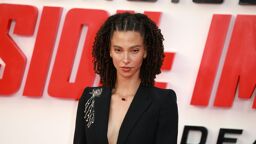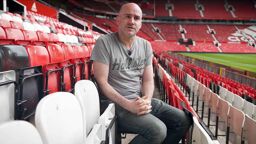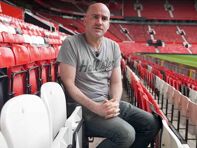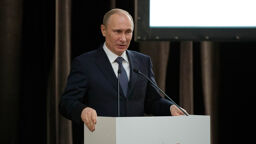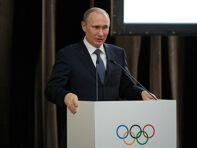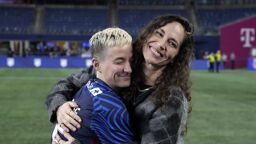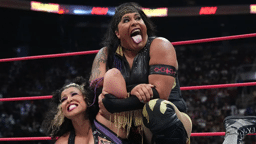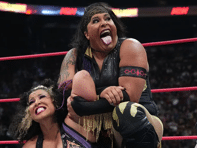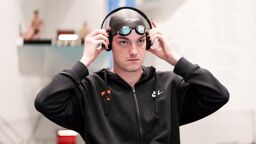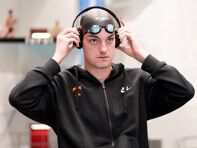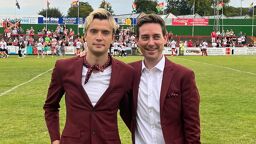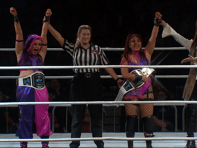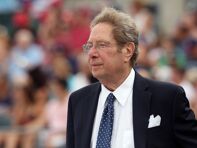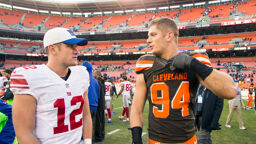When the record-breaking 41 out athletes compete at the Rio 2016 Olympic Games they are carrying the torch of more their predecessors, both in and out of the closet at the time they competed. Since 1928, more than 250 LGBT Olympians have made their mark in sport, by my estimate. They have left a proud legacy that has grown with every Olympic Games, despite continuing prejudice and personal insecurities.
The history of LGBT athletes and the OIympics goes back more than a century. Have you heard about the gay man who was dropped from his Olympic team because he was too butch? It happened to 28-year-old Danish gymnast Niels Bukh. He was considered too "thick-set" to fit in with his otherwise slim-built team and was not selected. All this was happened in 1908.
Bukh's sexuality was known to his family, and had he competed in London 1908 he would have been the first known LGBT Olympian. Undeterred, he turned to coaching and coached Denmark's gold medal-winning gymnastics team in Stockholm 1912. Unfortunately, Hitler was one of his biggest fans and roped him in to help with the propaganda of the 1936 Berlin Olympics.
 Must Reads
Must Reads 
In Amsterdam 1928 Otto Peltzer of Germany had made his Olympic debut and is the first gay Olympian. He was the 800- and 1,500-meter world record holder, team captain and the favorite to win a gold medal. Sadly, injury prevented his success in Amsterdam. At the 1932 Olympics in Los Angeles it was the wrong running shoes that let him down. Peltzer was arrested for his homosexuality in 1934 and later imprisoned, making it impossible for him to train for the Berlin Olympics. He eventually wound up in a Nazi concentration camp that was liberated by American forces in May 1945.
Peltzer's sexuality wasn't known in Amsterdam 1928 but fellow German Renée Sintenis was living an openly lesbian lifestyle. In Amsterdam she won a bronze medal, becoming the first LGBT Olympic medal winner. But it wasn't in sport and she was not considered an athlete. She won her medal in sculpture, as art was part of the Olympic competitive program for several decades before 1952.
The Berlin games also saw the first big gender controversy. A relatively unknown sprinter, America's Helen Stephens, nicknamed the "Fulton Flash," beat the reigning Olympic champion in the women's 100 meters. Poland's Stanislawa Walasiewicz, the 1932 champion, was as stunned as anyone. Polish team managers accused Stephens of cheating and of being a man, which was proved to be false. In a twist, in 1980 Stanislawa was murdered and her autopsy revealed she was intersexed.
Stanislawa Walasiewicz shares with Mildred "Babe" Didrikson the honor of being the first female LGBT Olympic athletes, both making their debut in 1932. Didrikson was a sporting prodigy. With her first javelin throw she broke the world record and became Olympic champion. She also won gold in the 800 meters. Outside the Olympics Didrikson excelled in many sports including the one in which she became most famous, golf. In 1999 the Associated Press voted Didrikson the best female athlete of the 20th century.
Figure skating provides the youngest ever LGBT Olympian. At Innsbruck 1964 Czech skater Ondrej Nepela competed just a week after his 13th birthday. At the Sapporo 1972 games he became Olympic champion. His death in 1989 makes him the second LGBT Olympian to die of AIDS-related causes, the first was Tom Waddell, founder of the Gay Games, in 1987.
Nepela's successor as champion also died from AIDS. John Curry was European and British champion going into the 1976 Innsbruck Olympics. His gold medal performance still ranks as one of the best in Olympic history. However, it was what happened the morning afterwards that makes him the first openly LGBT Olympic champion. He was outed by a newspaper and although Curry didn't deny he was gay he didn't confirm it either. Instead he insisted that people should look at his skating and not at his private life. In the closing ceremony ice gala he deliberately chose to give a more masculine performance to his winning routine. By the time his reign as champion ended in 1980 he had come to accept that his sexuality was an open secret.
But who was the first athlete to actually compete as an openly LGBT Olympian? This was U.S. equestrian Robert Dover who came out during his second Olympic appearance in Seoul 1988. Dover currently holds the record for the most Olympic appearances by an LGBT athlete — six successive games since 1984.
In the 1980s and 1990s the fear of the homophobic backlash that followed the emergence of HIV effected many LGBT athletes. This homophobia is still felt in many sports, which is one reason why fewer male athletes have come out than female. The number of known LGBT Olympians to have competed in the women's competitions is 153 compared to 93 in the men's.
Between Robert Dover in 1988 and the 2006 Turin Winter Olympics the numbers of out athletes at each games remained in single figures. The numbers of athletes who competed and came out later has always been at least twice that. We are seeing more athletes than ever expressing their sexuality openly to the extent that the proportion of those openly LGBT athletes equals or sometimes surpasses the numbers of athletes who came out afterwards.
Tony Scupham-Bilton is an Olympic historian who lives in England. His blog, The Queerstory Files, is a compilation of LGBT history.





